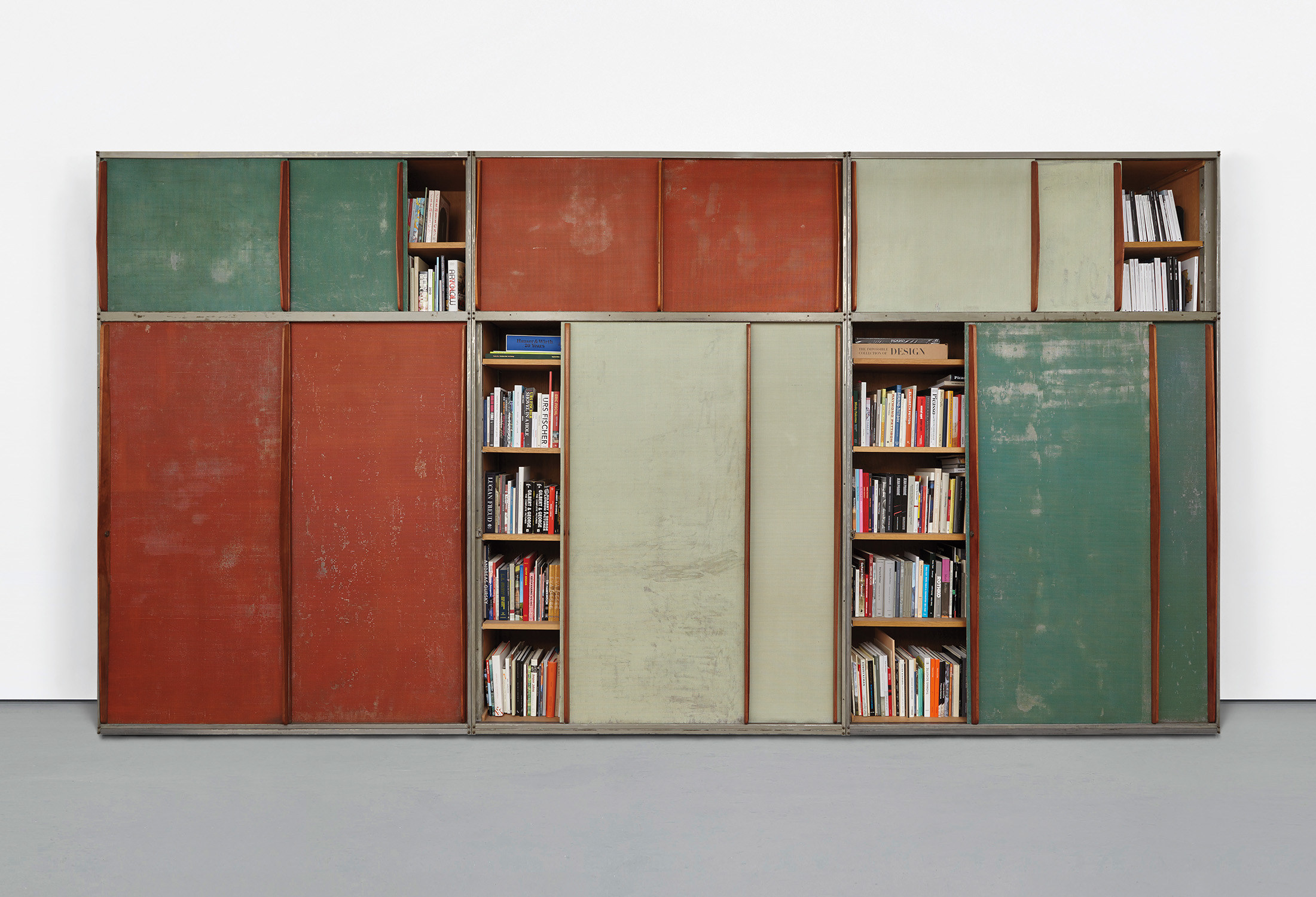



54
Charlotte Perriand
'Brazza' partitioned cupboard, designed for the Unité d'habitation Air France, Brazzaville
Full-Cataloguing
In 1950 Charlotte Perriand began designing the interiors and furnishing designs for the Unité d'habitation Air France in Brazzaville, Republic of the Congo. The four-story building, designed by the architects Jean Hébrard, R. Lefebvre, Jean Létu and François Bienvenu, comprised sixty apartments of varied types to house Air France employees in Brazzaville, a then central connection point for flights within Africa. The building’s facade, open-plan interiors with through apartments that ran north to south, and rooftop terrace made reference to the modernist principles of Le Corbusier, and were adapted to the city’s tropical climate. Built in the centre of the park, the building featured a long facade with concrete brise-soleil that framed pivoting aluminium louvers and ventilated staircases, embracing its surrounding whilst responding to the high humidity and temperature. Painted reddish ochre – a complementary colour to the surrounding lush landscape – the brise-soleil emphasised the grid-like composition of the facade punctuated by the white mashrabiyas of the building’s staircases. Perriand studied the building’s exterior colour scheme, which, heightened by the facade’s horizontal and vertical lines, provided a rhythmic structuring that Perriand extended into the interior of the building.
Fundamental to Perriand’s interiors for the Unité d'habitation Air France were her designs for storage units or cupboards, known as ‘Placards Brazza’. She designed eight standardised models that could be combined based on their placement and use within each apartment. The cupboards were built into ‘hollow corpuses’ in the concrete walls of the apartment kitchens, living rooms, and bedrooms. For Perriand these designs were ‘…all the more critical as the habitable space decreased and one can say that the built-in storage ‘volume’ has to increase as a function of the decrease in vital space’ (Charlotte Perriand, ‘Le problème du rangement’, L’architecture d’aujourd’hui, no. 56, October 1954, p. 51). Perriand developed the floor-to-ceiling cupboard model she had designed for the kitchen of Élisabeth de Vilmorin, Paris (1949-50) and the sliding door system she had used in her designs for the Unité d'Habitation, Marseille (1947-49), for which she had been granted the patent for its sliding element.
Perriand sought to put the cupboards into mass production, making the designs available to the public. In 1951 she presented her studies to Jean Prouvé, who offered to undertake the production of the cupboards’ folded sheet metal frames. The project marked Perriand’s first large-scale collaboration with the Ateliers Jean Prouvé, whose furniture with her own modifications she used to furnish the apartments. For the cupboard doors, which were produced in several colours as illustrated by the present lot, Perriand used diamond-point sheet metal manufactured by Cegedur Company, Paris. Later that year in a letter to Prouvé, Perriand wrote, ‘To start, I am very happy about the 'Brazza' prototype. I believe that this time we’ve gotten it right and that these facades fulfill the desires of a large number of architects: elimination of awkward constraints, combination of traditional architecture and factory-built facades easy to include in a plan, rapid mounting, a luxury finish for a modest price, installation with ventilation for tropical countries, [and] unventilated installation for Europe’ (Jacques Barsac, Charlotte Perriand: Complete Works Volume 2, 1940-1955, Paris, 2015, pp. 318-20). Perriand’s 'Brazza' cupboards illustrate her desire to bring together standardised elements in order to enhance the adaptability the designs, which she could re-imagine in response to the requirements of a specific space, imposing a sense of rhythm and structure within it.
Charlotte Perriand
French | B. 1903 D. 1999Trailblazer Charlotte Perriand burst onto the French design scene in her early 20s, seemingly undeterred by obstacles in an era when even the progressive Bauhaus school of design barred women from architecture and furniture design courses. She studied under Maurice Dufrêne at the École de l'Union Centrale des art Décoratifs, entering into a competition at the 1925 Expo des Arts Décoratifs by age 22 and gaining critical acclaim for her exhibition at the Salon d'Automne in 1927.
On the heels of this success, that same year she joined the Paris design studio of Le Corbusier and his cousin Pierre Jeanneret. For ten years the three collaborated on "equipment for living," such as the iconic tubular steel B306 Chaise Longue (1928). After World War II, Perriand joined forces with Jean Prouvé to create modernist furniture that combined the precise lines of Prouvé's bent steel with the soft, round edges and warmth of natural wood.